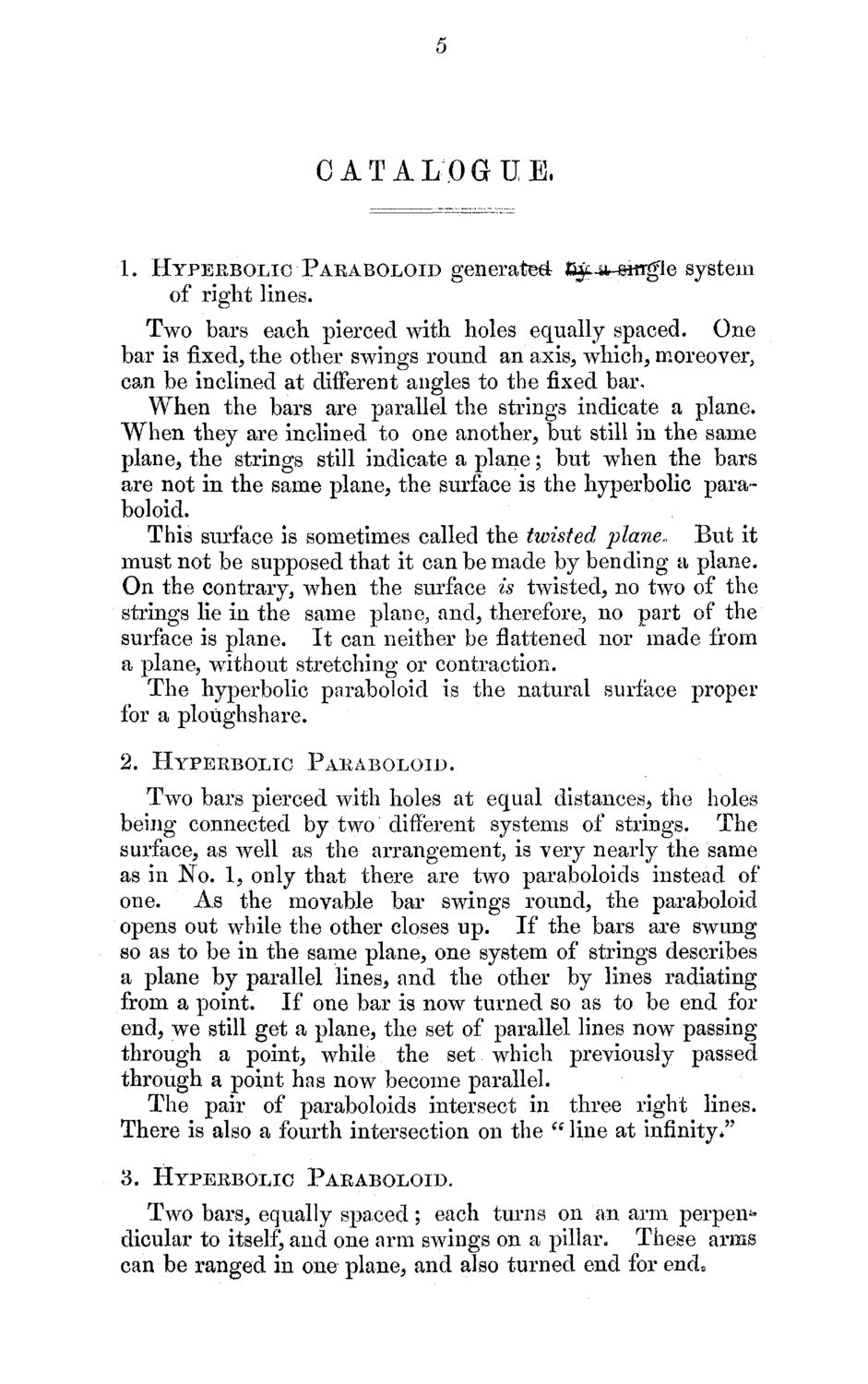| |
| |
Caption: Mathematical Models Catalog of a Collection of Models of Ruled Surfaces
This is a reduced-resolution page image for fast online browsing.

EXTRACTED TEXT FROM PAGE:
5 C A T A L O G U E , 1. Hyperbolic Paraboloid generated $£4±-mngle system of right lines. T w o bars each pierced with holes equally spaced. O n e bar is fixed, the other swings round an axis, which, moreover, can be inclined at different angles to thefixedbar. W h e n the bars are parallel the strings indicate a plane. W h e n they are inclined to one another, but still in the same plane, the strings still indicate a plane; but when the bars are not in the same plane, the surface is the hyperbolic paraboloid. This surface is sometimes called the twisted plane. B u t it must not be supposed that it can be m a d e by bending a plane. O n the contrary^ w h e n the surface is twisted, no two of the strings lie in the same plane, and, therefore, no part of the surface is plane. It can neither beflattenednor m a d e from a plane, without stretching or contraction. T h e hyperbolic paraboloid is the natural surface proper for a ploughshare. 2. Hyperbolic Paraboloid. T w o bars pierced with holes at equal distances., the holes being connected by two different systems of strings. T h e surface, as well as the arrangement, is very nearly the same as in N o . 1, only that there are two paraboloids instead of one. A s the movable bar swings round, the paraboloid opens out while the other closes up. If the bars are swung so as to be in the same plane, one system of strings describes a plane by parallel lines, and the other by lines radiating from a point. If one bar is n o w turned so as to be end for end, w e still get a plane, the set of parallel lines n o w passing through a point, while the set which previously passed through a point has n o w become parallel. T h e pair of paraboloids intersect in three right lines. There is also a fourth intersection on the " line at infinity*" 3. Hyperbolic Paraboloid. Two bars, equally spaced; each turns on an arm perpendicular to itself, and one arm swings on a pillar. These arms can be ranged in one plane, and also turned end for ends
| |